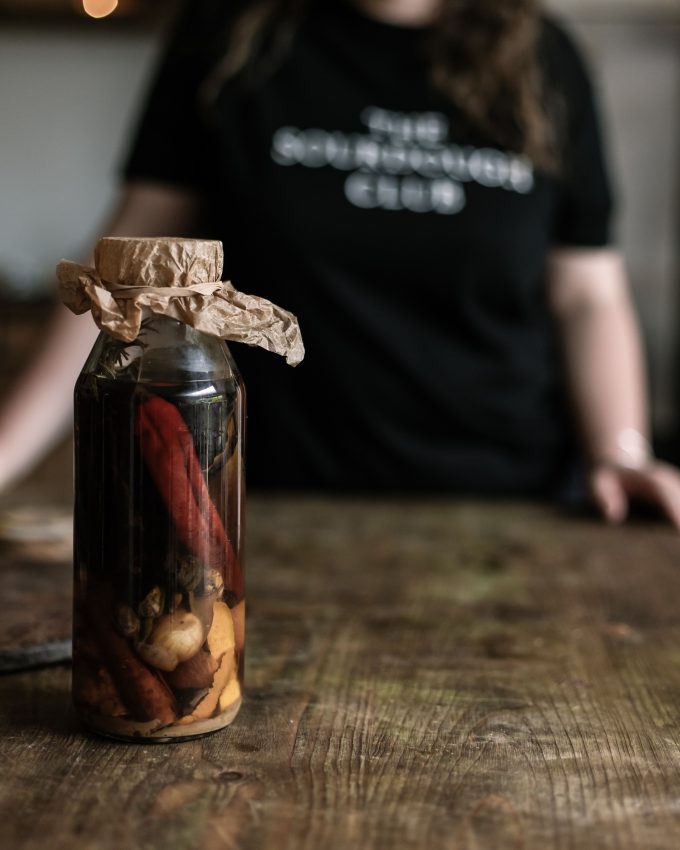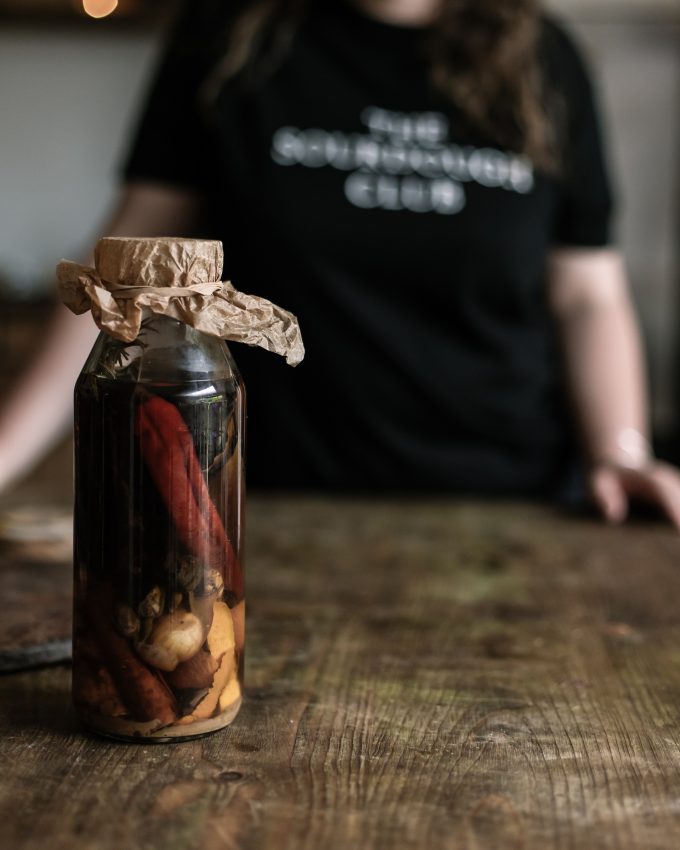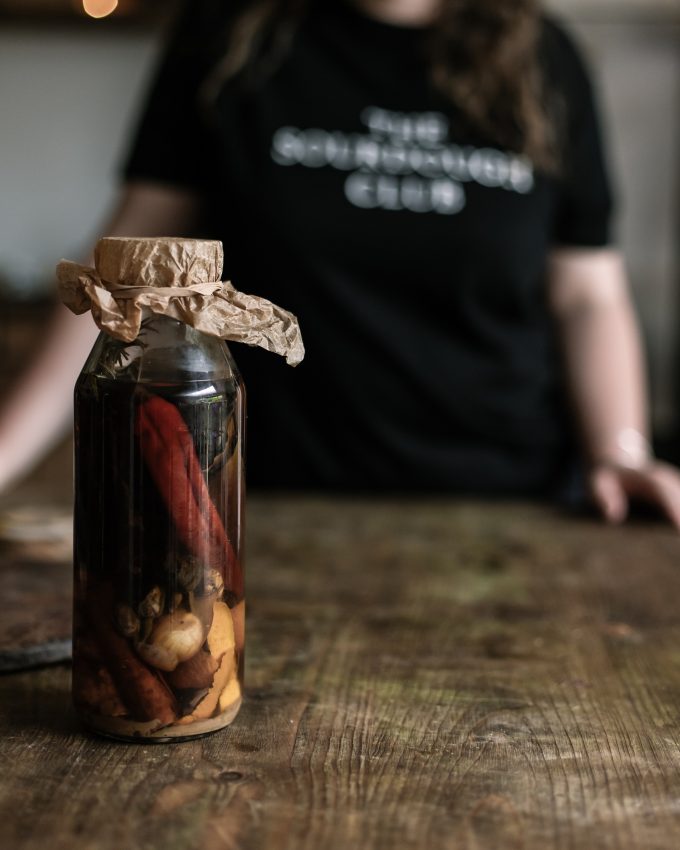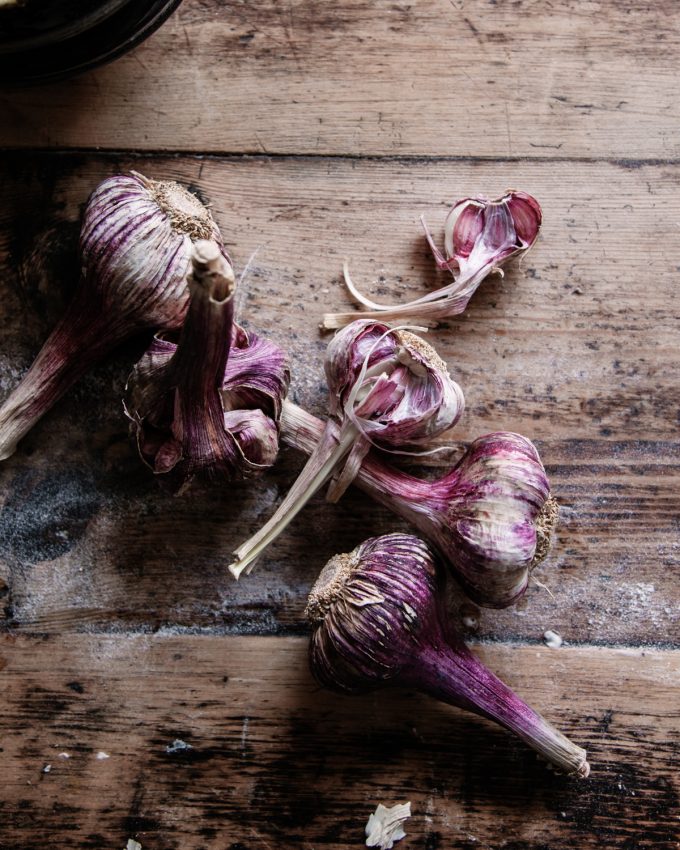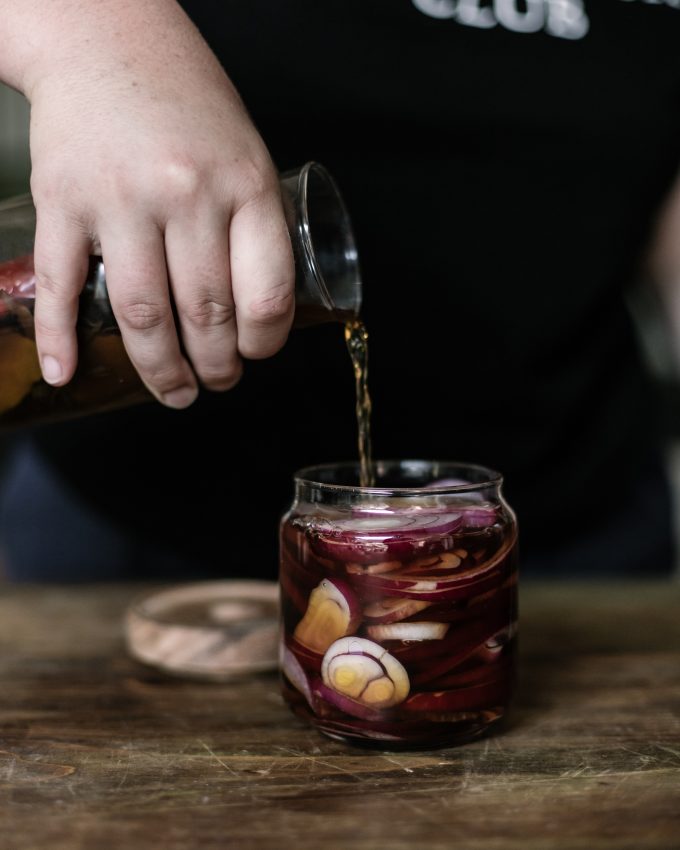Learning Objective
Learn to make these simple vinegars to support your health in everyday life.
Please note that you may not have access to all the levels in this post.
Why do we make our own vinegars here at the Sourdough School? Well, first of all, it’s a natural probiotic. We also know that when you eat acidic foods with your bread, it helps to slow the rate of assimilation of carbohydrates, which in turn helps keep blood sugar under control. In addition, if you use a dark fruit to make your vinegar (something like plums or blackcurrants), this naturally increases levels of polyphenols in your diet. For all these reasons, and because they bring a lovely flavour to your food, we would encourage you to include vinegar in your diet every day.
Apple Cider Vinegar
One of the easiest vinegars to make is apple cider vinegar, so this is the one I recommend for beginners. Once you have mastered the technique, it is easily adapted to other fruit.
Prep time: 15 mins.
Makes about 1 litre (13/4 pints)
Ingredients for the apple cider vinegar
- 6 – 8 organic apples, remove the stem and any bruised bits but leave the core and peel
- 6 – 8 teaspoons raw honey or unrefined sugar
- enough water to cover the fruit
Equipment
- a wide-mouth jar, cleaned and sterilised
- jug
- a clean soft cotton tea towel
- a piece of muslin
- a bottle, sterilised
Method
Wipe over each of the apples with a clean damp cloth. Chop the apples into 6 or 8 pieces. Put the fruit pieces into your jar. Pour the water into your jug and gradually add the honey or sugar, stirring to disperse it through the liquid. Taste after each addition to check for sweetness – you are looking for something that tastes like a sweet tea. Pour the sweetened water into the jar over the apple pieces. Use the clean tea towel to cover the top of the jar and secured it with an elastic band. Leave the jar on the kitchen counter for 1 month, stirring the mixture occasionally.
After a month the mixture is ready to strain. Pour the contents of the jar through a muslin folded several times into a sterilised bottle. Leave this to ferment at room temperature for another 2-3 weeks, shaking it every few days and ‘burping’ it twice a day to allow the gases to escape and prevent a messy explosion. It will be cloudy to begin with but will settle over time. It’s ready to use when it tastes like vinegar.
We make other fruit vinegars using this method. Try substituting cherries, plums, blackberries or pears for the apples, but be aware that soft fruit tends to ferment a little quicker.
Fire vinegar
Once the vinegar has been made I pour about a pint (500ml) vinegar over 6 cloves of garlic, turmeric root, lemon peel, rosemary, ginger root, cloves, & chillies, and leave to marinate for at least a month.
I use it in hot water as a drink to ward off evil spirits and coughs and colds.
Pickled Red Onions
To make the pickled red onions I finely sliced the onion into rings, put 2 tablespoons of clear runny honey in a jar with them and spices, such as cloves, or coriander seeds, season lightly with salt and then pour over the vinegar. I stir 3 times on the first day and leave on the side in the kitchen and then I keep in the fridge. They soften with time but they are wonderful. You can use either vinegar for this.
I keep my vinegars in the fridge, but they are also fine in a bottle on the side in the kitchen.
